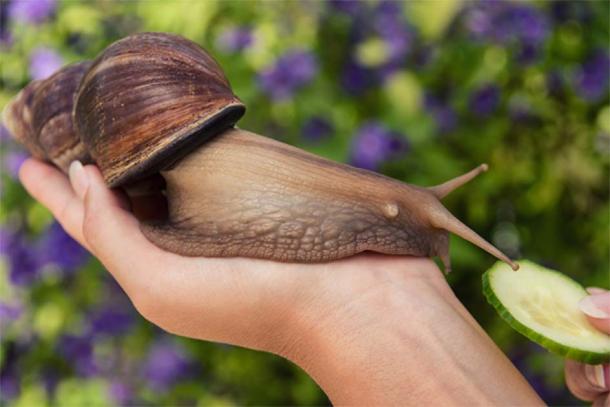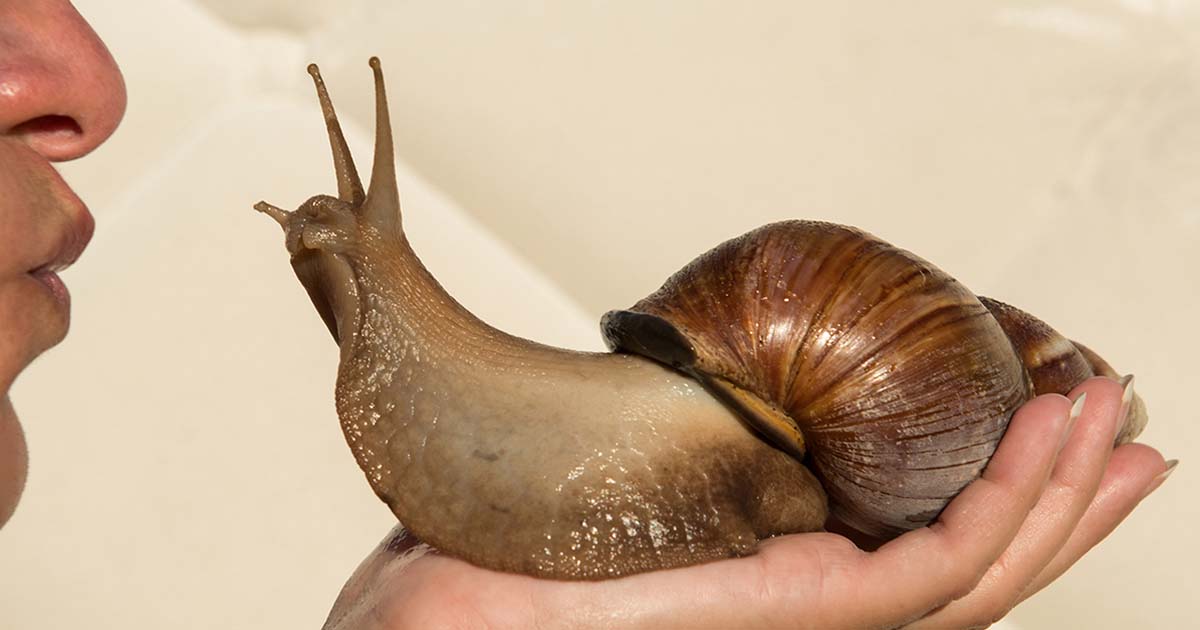Prehistoric Hunters Roasted and Ate Giant Snails 170,000 Years Ago
In a groundbreaking discovery, scientists have unearthed the remains of enormous snail shells at a 225,000-year-old archaeological site in southern Africa. What makes this find truly remarkable is that it appears these giant snails were not just natural inhabitants of the area, but also a significant source of sustenance for the humans who lived there.
Why and when terrestrial mollusks entered our ancestor’s diet were unanswered questions until the recent discovery of the giant land snail, known as Achatinidae, at a rock-shelter in southern Africa. A new study has demonstrated how small groups of hunter-gatherers captured, roasted and ate giant snails as early as 170,000 years ago.
Giant Snails as Big as Your Hand
When people hunted, fished and gathered to obtain food, clothing and other resources necessary for their survival, hunting techniques varied greatly across the world. In Africa, it is known that groups of ancient survivalists fashioned spears and clubs to kill large game animals such as antelopes and elephants.
- Medieval Manuscripts Are Full of Knights Fighting Snails
- New Minoan Hoard Proves Snails Were Lucrative
Until now, the oldest evidence of Homo sapiens capturing and eating giant land snails dated to roughly 35,000 years ago in Europe, and around 50,000 years ago in Africa. However, a new study published in the Quaternary Science Reviews shows how people at a southern African rock-shelter called Border Cave roasted a species of giant snail that was, according to the researchers, “as big as an adult’s hand.”

Archaeologists in the 1970s excavating at the mouth of Border Cave in South Africa. (Public domain)
Giant Snails Roasting on an Open Fire
The oldest archaeological layers at Border Cave date to at least 227,000 years ago. Evidence shows how ancient people living in this cave cooked starchy plant stems, ate an array of fruits and hunted small and large animals. A 2020 study published in Science even found that the ancient people living in Border’s cave made grass bedding around 200,000 years ago.
The new study was led by Marine Wojcieszak of the Royal Institute for Cultural Heritage in Brussels. An analysis of shell fragments excavated at Border Cave demonstrates how hunter-gatherers at the site roasted large African land snails on embers, “and then presumably ate them,” according to Wojcieszak. Described as “a delicacy,” eating these snails spiked in popularity between about 160,000 and 70,000 years ago.
According to the team of scientists, these new discoveries at Border Cave “challenge an influential idea that human groups did not make land snails and other small game a big part of their diet until the last Ice Age waned around 15,000 to 10,000 years ago.”

The giant snails would have been an important source of nutrition, especially for children and the elderly. (majivecka / Adobe Stock)
Giant Snails Allude to Early Cooperation
The team of researchers working on the study suggested that when hunter-gatherer groups in southern Africa roamed the countryside hunting large animals, some of them, perhaps with limited mobility due to age or injury, might have stayed behind “snail-gathering.” Wojcieszak added that food sharing at Border Cave demonstrates how “cooperative social behavior was in place from the dawn of our species.” Furthermore, because snail meat is relatively easy to eat, the fatty protein of snails would have been an important source of nutrition for the elderly and smaller children.
Science News reported that previous archaeological excavations at a cave on the southern tip of South Africa revealed that humans ate mussels, limpets and other marine mollusks as early as around 164,000 years ago. However, according to archaeologist Antonieta Jerardino of the University of South Africa in Pretoria, the new evidence of giant snail consumption at Africa’s Border Cave pushes back the human consumption of mollusks by several thousand years to 170,000 years ago.

The new research revealed that the giant snails were cooked on hot embers by hunter-gatherers in southern Africa thousands of years ago. (Gorodenkoff / Adobe Stock)
Testing Ancient Snail Cooking Methodology
The research team studied 27 snail shell fragments from various sedimentary layers at Border Cave, which were compared with shell fragments of modern large African snails. The snails were heated in a metal furnace at temperatures ranging from 200° to 550° Celsius, with heating times lasting from five minutes to 36 hours.
Most of the shell fragments discovered at the site displayed signs of extended heat exposure, which the researchers say is consistent with “having once been attached to snails that were cooked on hot embers.” It was concluded that the lower parts of large land snail shells rested against the hot embers during cooking, which accounts for the burned and unburned shell fragments discovered by the scientists.
Measuring Up the Pros and Cons of Giant Snail Consumption
A study published in the Journal of Food Science and Technology analyzed the approximate composition, minerals and vitamins of the edible part of the giant African land snail ( Archachatina marginata). The results showed that the snail meat contains high levels of protein, iron and magnesium.
- A Delicacy Now, Snails in the Human Diet May Have Meant Survival 150,000 Years Ago
- Tracking Human Migrations through… Snails
They also concluded that these giant snails contain vitamins such as vitamin A, which is essential for vision, immune system function and skin health. Furthermore, the creatures are packed with vitamin B12, which is important for the production of red blood cells and the proper functioning of the nervous system.
On the down side, large land snails carry parasites and bacteria that can cause illness in humans if not properly prepared and cooked. Nevertheless, it looks like the ancient hunters who ate these snails some 170,000 years ago knew about these drawbacks, and they therefore roasted them to kill off these toxic properties. Teresa Steele, an archaeologist at the University of California, concluded that “it’s not surprising that ancient H. sapiens recognized the nutritional value of land snails and occasionally cooked and ate them by 170,000 years ago.”
Top image: Giant snail as big as a human hand. Source: majivecka / Adobe Stock
By Ashley Cowie


















Comments
"...occasionally cooked and ate them by 170,000 years ago.”
So, not a staple, then? If large mammalian herbivores were in short supply, one could easily see the snails being utilised. Otherwise, would they have bothered?
There's tucker and there's preferred tucker.
"...occasionally cooked and ate them by 170,000 years ago.”
So, not a staple, then? If large mammalian herbivores were in short supply, one could easily see the snails bring utilised. Otherwise, would they have bothered?
There's tucker and there's preferred tucker.